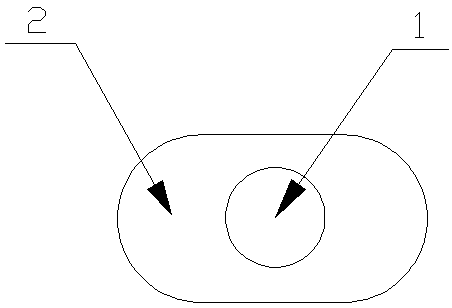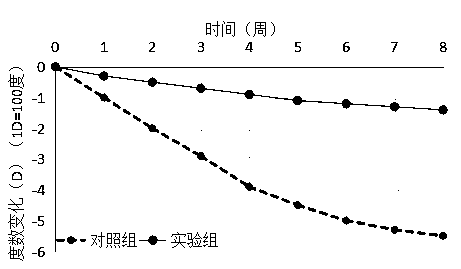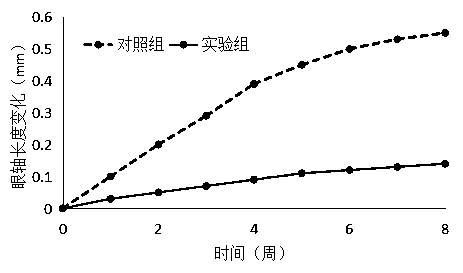Lens
A lens and spectacle lens technology, applied in the field of lenses, can solve the problem of lack of myopia prevention effect, and achieve the effects of protecting human eyesight, delaying myopia, and protecting the retina
- Summary
- Abstract
- Description
- Claims
- Application Information
AI Technical Summary
Problems solved by technology
Method used
Image
Examples
Embodiment 1
[0038] Such as figure 1 As shown, a kind of lens, the spectacle lens is divided into zone I and zone II, and the area of zone III is 0. Zone I is
[0039] Circular shape, zone II is located around zone I. Among them, the surface of zone Ⅰ is not treated, and the outer surface of the lens in zone Ⅱ is coated with anti-reflection coating and anti-reflection coating. The material of the anti-reflection film is magnesium fluoride film, and the material of the anti-reflection film is a metal anti-reflection film containing aluminum and nano particles.
[0040] We use highly myopic lenses (-10D) to establish a guinea pig high myopia model. figure 1 Lenses shown that alter the spectrum of transmitted light. figure 2 is the change of the degree of myopia over time, image 3 It is the change of the axial length of the eye over time (the longer eye axis will lead to the increase of myopia), it can be seen that compared with the control group, the lenses of the experimental group...
Embodiment 2
[0042] Such as Figure 4 As shown, a lens is a spectacle lens for people to wear. The spectacle lens is divided into a circular zone I and a zone II located around zone I, and a transition zone between zones I and II, zone III and zone II The area is 2200 mm 2 , Zone III is the coating gradient zone. Among them, the outer surface of the lens in zone Ⅰ is coated with anti-reflection coating and anti-reflection coating in sequence, and the outer surface of the lens in zone Ⅱ is also coated with anti-reflection coating and anti-reflection coating in sequence. The anti-reflection spectrum band of the anti-reflection coating is 440nm-600nm. The anti-reflection spectrum band of the AR coating in zone I is less than 440nm, and the anti-reflection spectrum band of the AR coating in zone II is less than 440nm and greater than 600nm. The material of the above-mentioned AR coating is magnesium fluoride film, and the material of the AR coating is aluminum and Nanoparticle-based metal AR...
Embodiment 3
[0044] Such as Figure 5 As shown, a lens is a spectacle lens for people to wear, and the spectacle lens is divided into a rectangular zone I and a zone II located around zone I, and a transition zone between zone I and zone II, zone III, zone II 1800 mm outer surface area 2 , Zone III is the step change zone of the coating, and the AR coating and the AR coating have two steps in Zone III. Among them, the outer surface of the lens in zone I is coated with anti-reflection film and anti-reflection film in turn. In order to improve the light fill rate, the lens in zone II is not treated. The anti-reflection spectrum band of the anti-reflection film is 440nm-550nm. The transmission spectrum band is greater than 700nm and less than 440nm, the material of the anti-reflection film is magnesium fluoride film, and the material of the anti-reflection film is a metal anti-reflection film containing aluminum and nanoparticles.
PUM
 Login to View More
Login to View More Abstract
Description
Claims
Application Information
 Login to View More
Login to View More - R&D
- Intellectual Property
- Life Sciences
- Materials
- Tech Scout
- Unparalleled Data Quality
- Higher Quality Content
- 60% Fewer Hallucinations
Browse by: Latest US Patents, China's latest patents, Technical Efficacy Thesaurus, Application Domain, Technology Topic, Popular Technical Reports.
© 2025 PatSnap. All rights reserved.Legal|Privacy policy|Modern Slavery Act Transparency Statement|Sitemap|About US| Contact US: help@patsnap.com



